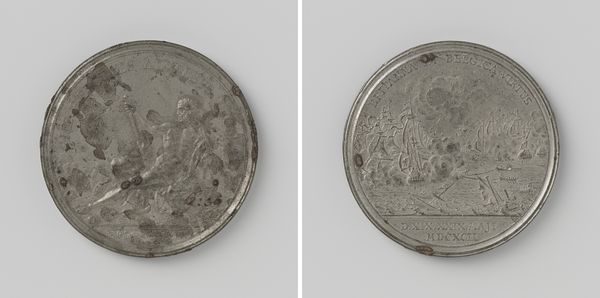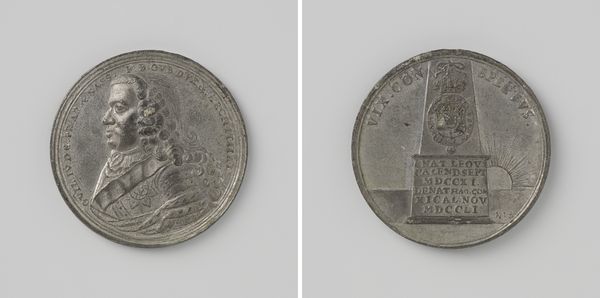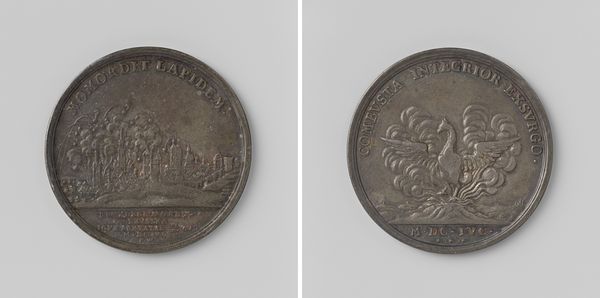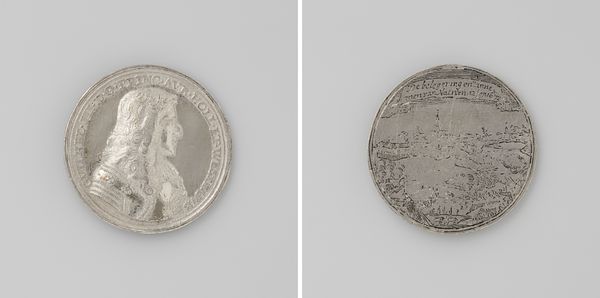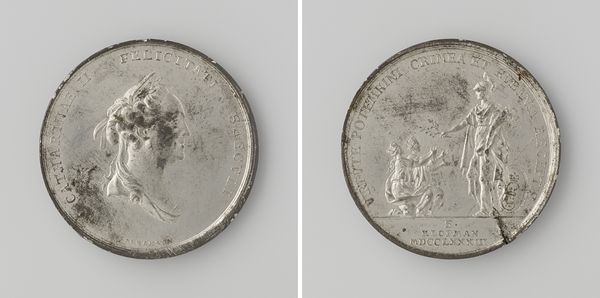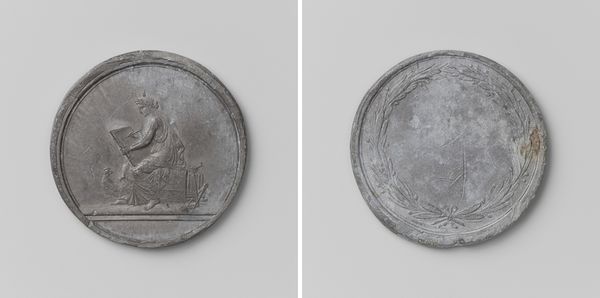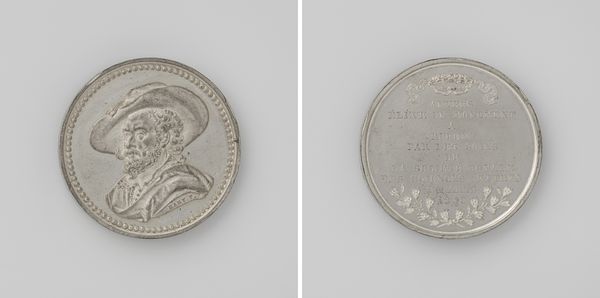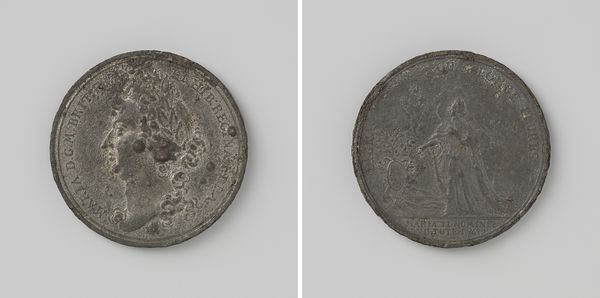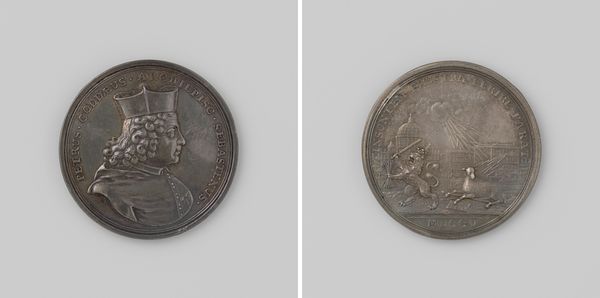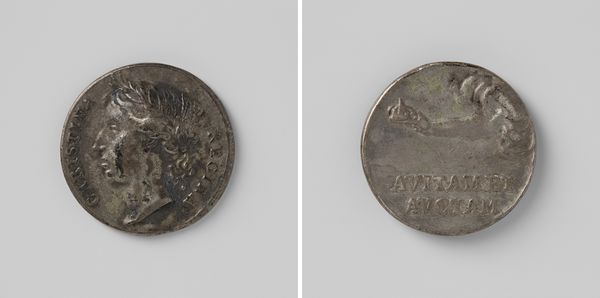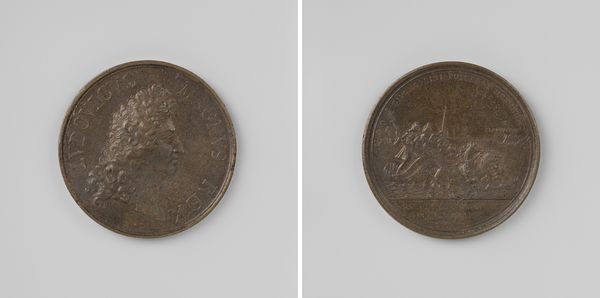
Zeeslag bij Kaap La Hogue, de Fransen verslagen door de vloot van Engeland en Holland 1692
0:00
0:00
#
natural stone pattern
#
3d sculpting
#
3d model
#
3d printed part
#
sculpture
#
sculptural image
#
unrealistic statue
#
3d shape
#
stoneware
#
ceramic
Dimensions: diameter 3.7 cm, weight 15.76 gr
Copyright: Rijks Museum: Open Domain
Editor: So, here we have a piece titled "Zeeslag bij Kaap La Hogue, de Fransen verslagen door de vloot van Engeland en Holland," dating back to 1692. It’s an anonymous work housed in the Rijksmuseum. The dark stoneware makes it look almost like a coin or a medal. There are images on each side of the coin… what do you see in it, Professor? Curator: I see a powerful statement about Dutch and English maritime dominance in a time rife with colonial ambitions and power struggles. We’re looking at a visual articulation of national pride intertwined with the very real violence of naval warfare. Consider what it means to commemorate a battle so explicitly. What narratives are being constructed and reinforced? Who benefits from this representation? Editor: It almost feels like propaganda. One side seems to glorify the victors while the other shows devastation, maybe of the vanquished fleet? Curator: Precisely! It is propaganda. But let’s unpack that term. Who are the intended viewers? What existing beliefs about national identity, war, and perhaps even divine favor, are being leveraged? The inclusion of both the triumphant fleet and the destruction – how does this play into the politics of the time? And consider how the idea of “anonymous” shapes the work. Does that give it even greater impact, implying that everyone should know this narrative? Editor: That's a fascinating point – the anonymity amplifying the message's universality. Curator: Indeed! And consider the long shadow this kind of imagery casts. How do these historical representations shape our understanding of national identity and international relations even today? These narratives of victory and defeat continue to resonate, often informing contemporary geopolitical discourse. This isn't just about ships on water; it's about power, identity, and the stories we tell ourselves. Editor: This has given me so much to think about, how art serves to perpetuate, even cement particular ways of seeing the world and ourselves. Thank you! Curator: My pleasure. It’s crucial to see these objects as active participants in shaping our understanding of the world. Keep asking those critical questions!
Comments
No comments
Be the first to comment and join the conversation on the ultimate creative platform.
